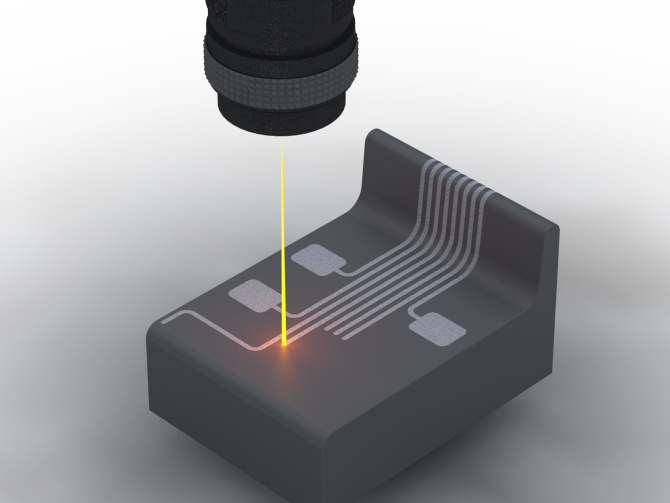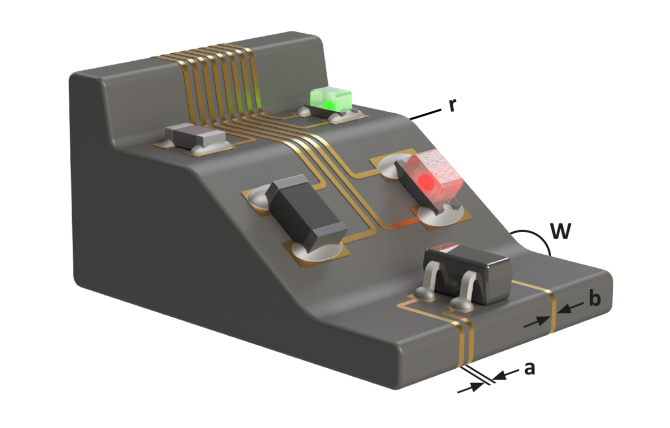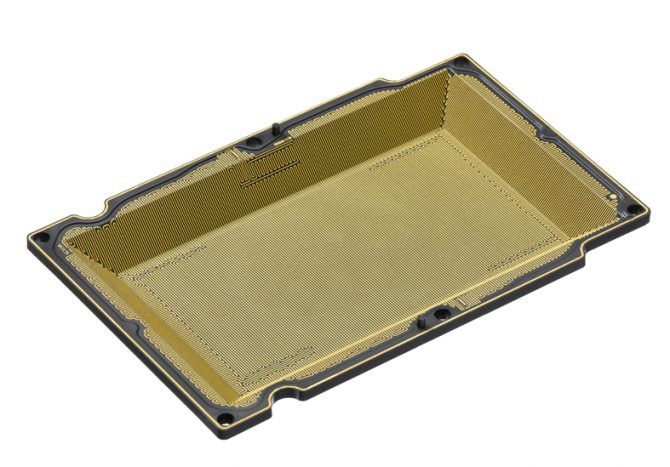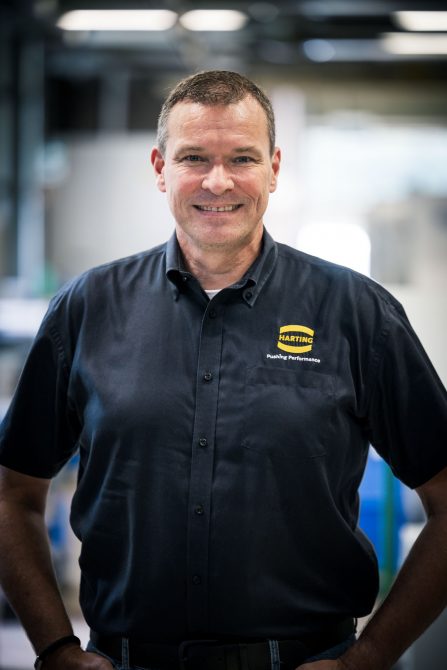Laser immediate structuring (LDS) is a unique results story. For practically 20 decades, it has been attainable to use digital conductor paths immediately on to plastic components through series manufacturing. LDS allows the production of electronic assemblies with adaptable geometric designs. This procedure enables digital goods (these types of as good phones, sensors or clinical gadgets) to turn into even smaller and far more effective. Automatic manufacturing procedures also make this approach more economically attractive.
There is a lot less and less area offered for digital assemblies, so remedies are required which replace typical printed circuit boards. LDS permits further miniaturization and makes increasingly elaborate geometric models achievable. This is a stable and trustworthy process that has established alone in top quality-important sectors this sort of as healthcare engineering or security-appropriate parts for the automotive marketplace.
LDS process enables 3-dimensional assemblies
Immediate laser structuring permits 3D-MID (Mechatronic Built-in Gadgets) assemblies to be manufactured. When making use of 3D-MID, electronic factors can be equipped instantly onto a a few-dimensional foundation entire body, with no circuit boards or connecting cables. The foundation system is made applying an injection moulding approach, whereby the thermoplastic material has a non-conductive, inorganic additive.

The construction of the conductor route is used utilizing the LDS approach.
LDS enables digital assemblies to be made in flexible geometric designs. Clever telephones, listening to aids and good watches are starting to be smaller and additional highly effective thanks to this course of action. Resource: Harting
The additives in the content are “activated” by direct laser structuring so that the plastic material can accommodate the electrical conductor paths. The laser beam writes the locations meant for the conductor paths and produces a micro-tough construction. The produced steel particles kind the nuclei for the subsequent chemical metallisation. In this way, the electrical conductor paths are applied to the parts marked by the laser. The other regions of the a few-dimensional foundation system continue to be unchanged. The plastic element can then be assembled in standard SMD processes comparable to a regular PCB. It is also acceptable for soldering in a reflow oven.
Multipurpose application of laser technological know-how
As a single of the greatest suppliers of 3D-MID factors outside the house of Asia, HARTING uses higher-functionality laser techniques for the LDS process, with three lasers doing work in parallel, each individual offset by 45 levels. Thanks to an further axis of rotation, components can be processed by the laser simultaneously from all sides (360 levels). This technologies enables versatile geometric designs, these types of as reflector shells or LED lights, to be made. Regardless of the small conductor route thickness of 16 to 20 μm, the conductor paths are however acceptable for demanding automotive elements or for purposes with currents up to 10 A – for example for heating coils in cameras which are utilised to prevent the optics from fogging up

Minimum distances between the conductor paths (a): 50 – 150μm. Minimum amount width of the conductor paths (b): 50 – 150μm Radius (r): .2mm. Resource: Harting
Regular adjustments during the electronics enhancement section or new factors with modified proportions can guide to high-priced changes for the duration of regular PCB generation. The laser format, in distinction, can be adapted incredibly flexibly by utilizing the parameters of the laser’s control software program. No improvements in the injection moulding are needed for this.
The creation of prototypes applying LDS is also less difficult in contrast to standard procedures. HARTING can develop the plastic base entire body working with LDS-suitable substance and 3D printing. Injection moulding can also be utilized with low-cost prototype tools.
New developments in the LDS approach
Many facets of LDS technologies have been improved and even more made more than the earlier several decades.
- The doing work space of the laser has been enlarged from 160 x 160 x 80 mm to 200 mm x 200 mm x 80 mm, so enabling a larger packing density and the processing of even much larger parts.
- The doing the job speed of the laser can be doubled to 4 m/s by optimizing the servo models and mirrors which guideline the laser beam, thus drastically reducing the processing time.
- The enhancement of the optics enables the use of a laser with a diameter of 100 μm and a laser with a fantastic concentration of 50 μm for processing even scaled-down buildings.
HARTING is the only 3D-MID company in the environment that has a laser procedure with three good aim optics of 50 μm. Even smaller conductor route gaps can be attained many thanks to this wonderful target laser. As a result, quite a few conductor paths can be created on the exact element and a better packing density can be carried out. This is utilized for security technology, amid other issues, since the carefully spaced and intertwined conductors are capable of triggering basic safety alarms from even the smallest actual physical interference.
Advances in resources and economics
Only specially selected thermoplastics are licensed for the LDS process these are available from inventory. The process can be further more improved with purchaser-particular changes to the plastic material:
- HARTING utilizes a procedure which adds LDS additives to non-licensed elements to make them MID-compatible.
- Specific RAL or Pantone colors can be reached with MID plastics by using color pigments and exclusive LDS additives.
- By picking out ideal additives, specific RF attributes can also be carried out, based on the frequency vary.

Digital parts – these types of as LEDs, ICs, photodiodes and sensors – can be hooked up directly on to the ingredient provider. The assembled component carriers can then be processed as standard SMD components. Supply: Harting
To further boost the price-success of the production procedure, HARTING depends on automatic robotic units. The LDS laser system is outfitted with a rotary indexing table so that a element can be inserted or taken out while one more part is even now becoming processed. The in-feed and unloading treatments are automated by HARTING utilizing robotics. This boosts throughput and autonomy, even though also enabling integration into automated manufacturing processes. An further automation action is furnished in the course of the injection moulding process. In this article, far too, a robot requires in excess of the elimination of the injection moulded parts. The use of robotics also enhances the exact reproducibility of the procedures and, thus, over-all products excellent.
Additional progress for 3D-MID

The 3D-MID caps defend the electronics from unauthorized access both of those mechanically and electronically. A very specific meandering framework detects each and every obtain, no matter how little, and as a result stops theft. Supply: Harting
HARTING stories enhanced desire for MID jobs and has further expanded the 3D-MID division by investing in machinery and by buying a competitor’s business. Innovative in-dwelling solutions are also contributing to further advancement. HARTING has formulated a answer dependent on 3D-MID technologies which replaces versatile PCBs with a part carrier. Instead of utilizing a flex-PCB, the element provider can be equipped immediately with electronic elements, thus preserving up to two thirds of the price tag.
—————————————-
About HARTING 3D-MID
HARTING 3D-MID is giving the total benefit chain for 3D-MID systems from a single supply, together with improvement/prototyping of consumer-precise items, injection moulding, laser immediate structuring, metallization, assembly and link know-how, as well as closing inspection. Its core business is the manufacturing of mechatronic components for vehicle producing, industry, medical engineering and sensor programs.

Dirk Rettschlag, undertaking manager & IE MID at Harting MID.



